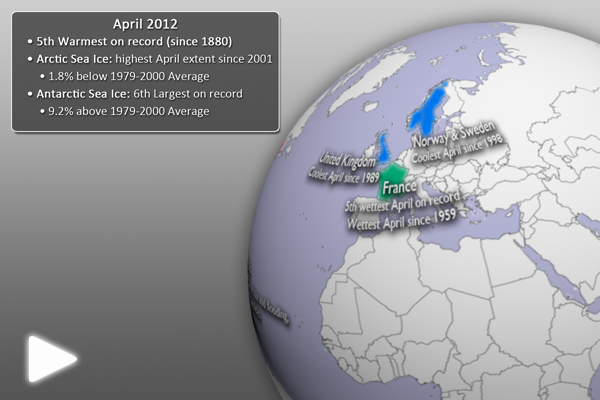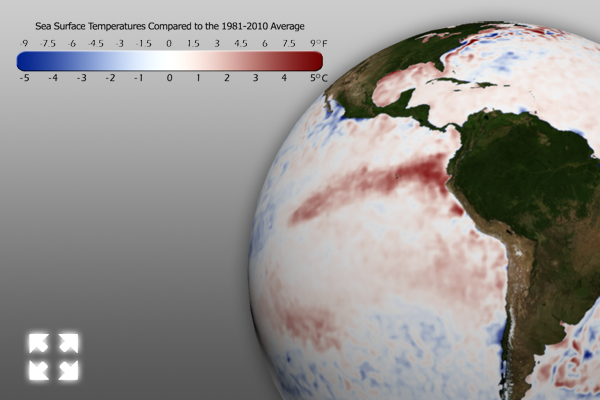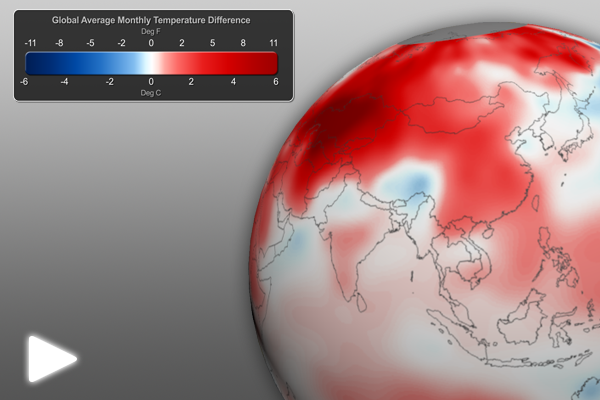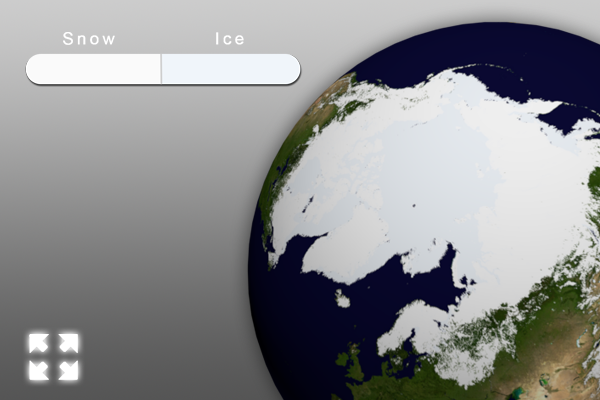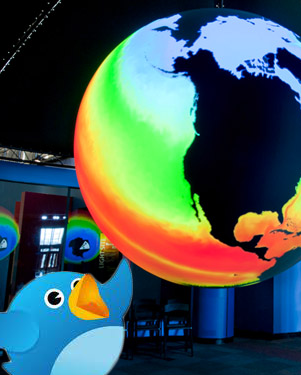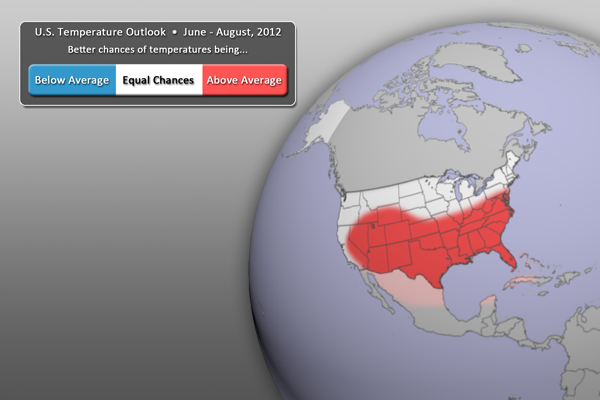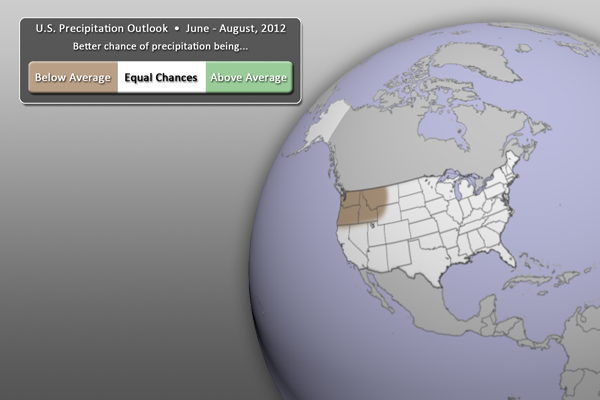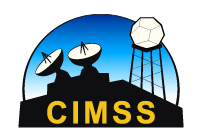Each month, around the 20th of the month, we will provide information regarding the previous month’s climate. Overall, preliminary data analysis suggests that April 2012 was the 5th warmest April on record (since 1880). Major stories include a warm contiguous United States and the end of La Niña. More detailed information follows:
April 2012 Highlights
- This dataset shows some of the major April climate highlights from the National Climatic Data Center’s (NCDC) monthly global climate analysis. The events are noted below with more information.
- El Niño/Southern Oscillation (ENSO): The cooler than average waters (La Niña) in the eastern tropical Pacific Ocean dissipated during April, giving way to neutral ENSO conditions. Click here for more information about ENSO and how it may impact the climate outlook for the coming months.
- Australia: At 41% below average precipitation, Australia experienced a drier-than-normal April. April 2012 was the 34th driest on record (113 years). Western Australia experienced its driest April since 2001.
- Norway & Sweden: Coolest April since 1998
- United Kingdom: Coolest April since 1989.
- France: Wettest April since 1959, and 5th wettest since records began.
- Hispaniola: The island experienced heavy rains on April 23rd, resulting in landslides, mudslides, and flooding. The rains are blamed on 16 fatalities.
- Contiguous United States: The U.S. experienced its third warmest April since records have been kept (1895).
SST Anomalies
- The real-time sea surface temperature anomaly dataset is a great way to visualize moderating water temperatures in the eastern tropical Pacific ocean. This helps show the warmer waters, indicating the loss of La Niña.
- Remember that the blues indicate cooler than average temperatures and reds indicate warmer than average temperatures (white: average).
Global Temperature Anomalies
- Using the real-time Monthly Temperature Anomalies dataset is a great way to convey where some of the warmer and cooler than average areas were in April.
- The combined global land and ocean average surface temperature for April 2012 was the 5th warmest on record at 14.35˚C (57.87˚F), which is 0.65˚C (1.17˚F) above the 20th century average.
- April 2012 marks the 326th consecutive month with a global temperature above the 20th century average.
- Please see the “April 2012 5th Warmest April on Record” post for more information.
Snow & Ice Cover
- Aside from helping to illustrate seasonal changes, the real-time Snow and Ice Cover dataset is a great way to convey sea ice change through time, including discussing how the current sea ice extent compares to other noteworthy years.
- The Arctic sea ice extent in April was the highest April extent since 2001. The extent was 1.8% below the 1979-2000 average.
- In Antarctica, the April sea ice extent was the 6th largest on record, at 9.2% above the 1979-2000 average.
Where do I find the datasets?
- First, check your SOS system to make sure they are not already in the EarthNow category. There is also an earthnow.sos playlist file that includes a playlist with all of these datasets.
- If not, you can download the datasets and playlist files from this FTP Site.
Helpful Resources for More Information
- http://www.ncdc.noaa.gov/oa/ncdc.html National Climatic Data Center (NCDC)
- http://www.ncdc.noaa.gov/teleconnections/enso/enso-tech.php About ENSO (El Niño/La Niña)
- http://www.ncdc.noaa.gov/sotc/global/ NCDC’s Global Climate Report

